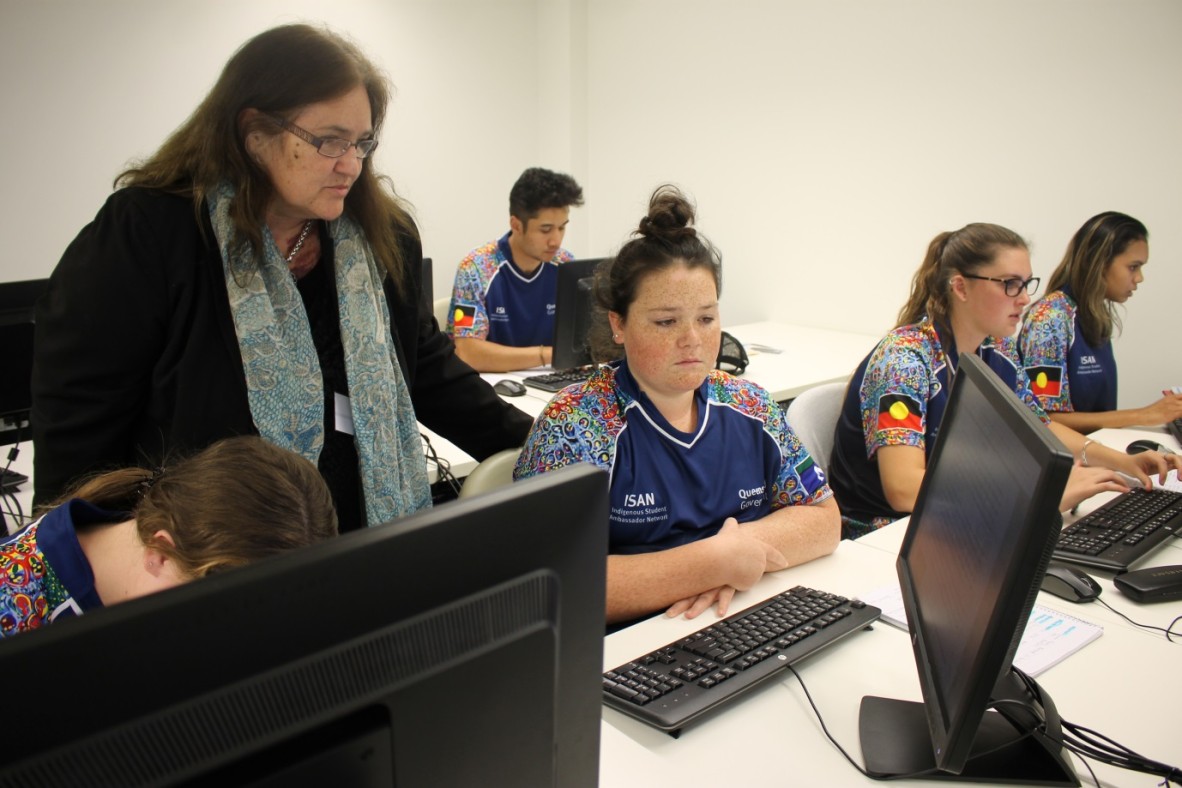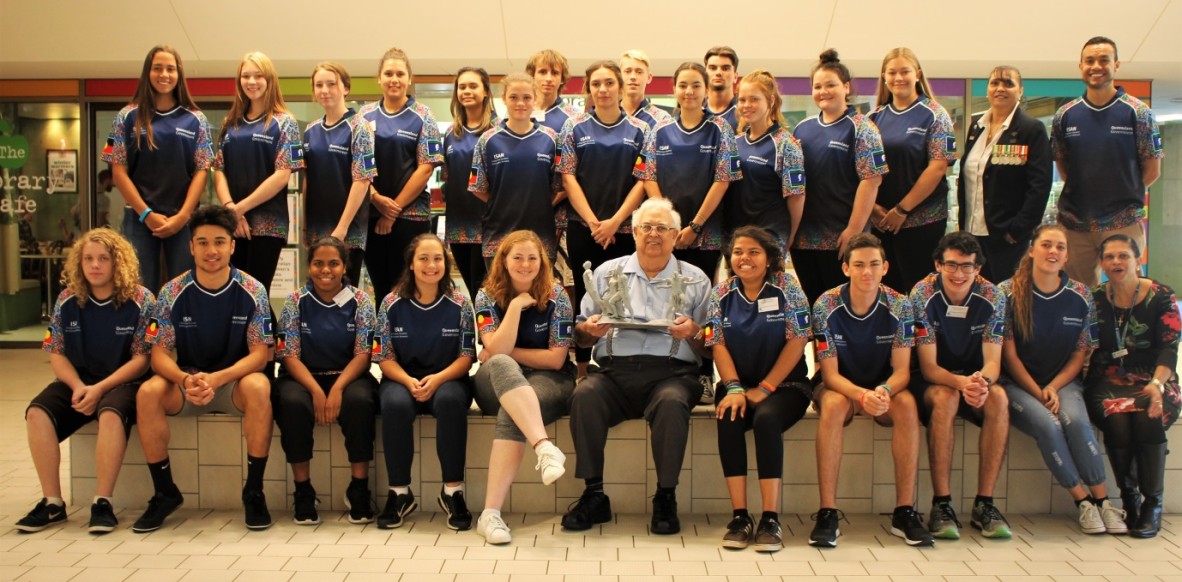For two days on the 31st July and 1st August, State Library played host to 22 young indigenous historians from all over Queensland – from Cloncurry to Mt Morgan, from Stanthorpe to Wynnum and Cooktown. Undertaking their senior school studies, the students were asked to contribute to our knowledge of indigenous soldiers in World War One, by researching a digger from their community or from their family.
As the representative of Information Services on the teaching team, it was a wonderful experience for me to open up the world of research sources for these students. At the beginning of our mentoring sessions, I asked who had used databases and not a single student knew what I was talking about. Quick learners, our group of students grasped the use of Ancestry.com, JSTOR, APA-FT, as well as Trove, National Archives of Australia, Queensland State Archives and more. Other team members presented on QANZAC, Indigenous languages, Historypin, and State Archives resources to help trace indigenous lives. Organized expertly by Amanda Garske, the two day visit to State Library included a back of house tour, lectures and mentoring, and the opportunity to be inspired.

Christina Ealing-Godbold from Information Services guides Young Indigenous Historians in their use of databases and reference sources at State Library of Queensland.
Photograph courtesy of Amanda Garske.
Inspirational indigenous leaders spoke to the group, encouraging them to do as well as possible at school so that doors would open to them in regard to career choices. One elder from Cherbourg was in tears as she entreated them to value their education about all else – Aunty Iris had many tales to tell of a childhood where indigenous students could only complete schooling until Grade 3. Lorraine Hatton, an Army leader who had been among the first group of women to be allowed to serve in the field in the Australian Army talked of her experiences of training to be promoted to Corporal, with 96 men and three women, and few indigenous trainees among them. The students were spell bound as they listened to her. Des Crump spoke to them in his own language, and inspired the students to help re-establish language in their own communities and Aunty Merle from Stradbroke enriched their understanding of Indigenous lifestyles from earlier generations.

Group Photo of our Indigenous Young Historians with Uncle Neil Finlay in the middle, holding the model for the Indigenous soldiers Memorial Statue to be erected in ANZAC square in 2018. Lorraine Hatton is second from right in the back row, and Aunty Merle from Stradbroke Island community is far right in the front row. Photograph courtesy of Amanda Garske.
Further treats awaited the students on their study tour, including visits to Toowoomba, Canberra and the Ration Shed at Cherbourg. I am sure we will have many blogs contributed by these eager students on Indigenous soldiers of the First World War. Their thirst for knowledge was clearly apparent, once their shyness subsided. Some students presented research for the first time to the group, and one delightful girl from Cloncurry was so nervous, she asked “Miss” if she could run through her talk with me first, so that she had the strength to present to a whole room of people. Her presentation was wonderful. Her aim was to study social work and psychology, so that she could help many of her young friends to beat addictions and battle depression, demonstrating a great strength of character in a young person living in a remote community.
Among these young people are undoubtedly our leaders of tomorrow.
Christina Ealing-Godbold
Senior Librarian
Information Services
Comments
Your email address will not be published.
We welcome relevant, respectful comments.